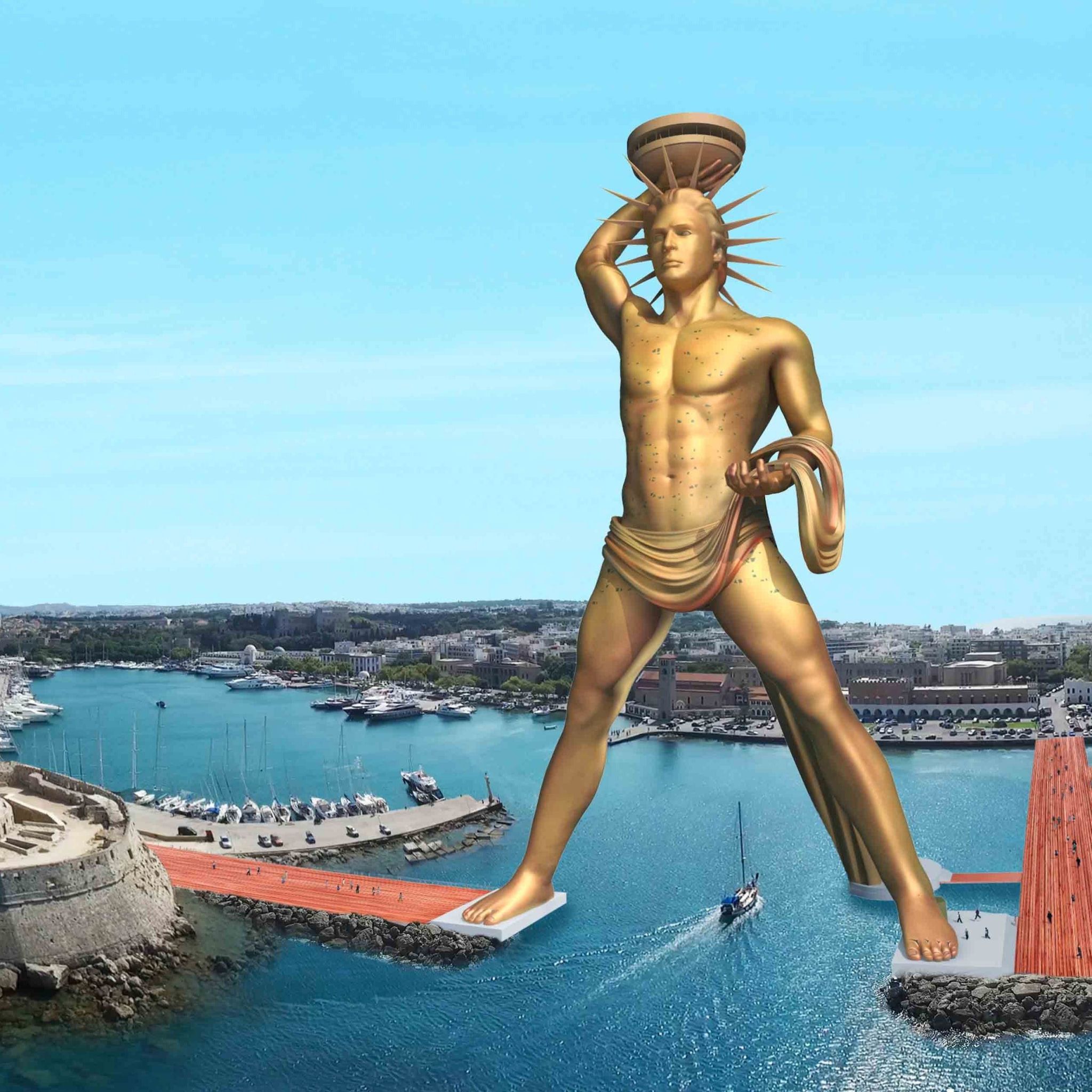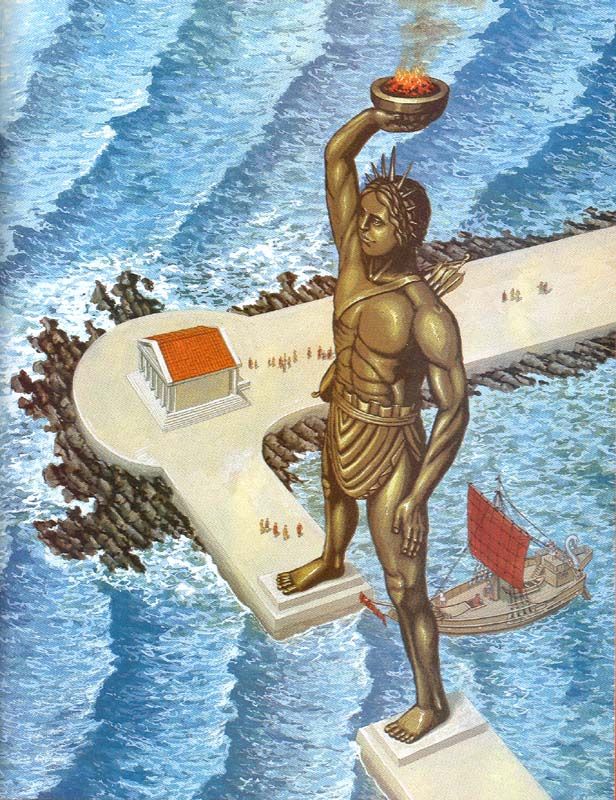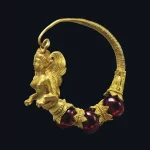The Colossus of Rhodes is a massive statue of Helios that was constructed between 292 and 280 BC by Chares of Lindos.

The Colossus of Rhodes was one of the most remarkable achievements of ancient engineering and art. Erected between 292 BC and 280 BC on the Greek island of Rhodes, this giant statue depicted Helios, the god of the sun. It was constructed by Chares of Lindos, a talented sculptor who managed to create an enduring symbol of triumph and resilience. The Colossus of Rhodes not only represented the technical prowess of the Hellenistic period but also held significant cultural and historical importance.
Standing approximately 33 meters (108 feet) high, the Colossus of Rhodes was comparable in height to the modern Statue of Liberty, though ancient descriptions and reconstructions suggest it may have stood even taller. This towering statue was positioned at the entrance of the harbor of the city of Rhodes, strategically placed to welcome visitors and signal the city’s prosperity and strength. As ships sailed into the bustling port, the imposing figure of Helios greeted them, his bronze form gleaming in the sunlight, symbolizing the protection and power bestowed upon the island by the sun god.
The construction of the Colossus was a formidable task that required immense resources, labor, and ingenuity. Chares of Lindos, a student of the renowned sculptor Lysippos, designed the statue to commemorate Rhodes’ victory over the Macedonian siege led by Demetrius Poliorcetes in 305 BC. The citizens of Rhodes decided to celebrate their triumph by dedicating a monumental statue to their patron deity, Helios. To fund this ambitious project, they melted down and repurposed the bronze from the abandoned siege weapons left by the Macedonians, transforming instruments of war into a symbol of peace and unity.

The engineering techniques employed in the construction of the Colossus were advanced for its time. The statue was built with an iron framework, which was then covered with bronze plates. This method not only provided structural stability but also allowed for a detailed and realistic representation of the god Helios. The pedestal on which the statue stood was constructed of white marble, adding to the grandeur and aesthetic appeal of the monument.
Despite its grandeur, the Colossus of Rhodes stood for only 54 years. In 226 BC, a massive earthquake struck Rhodes, causing the statue to collapse. The fallen Colossus lay in ruins for centuries, and even in its broken state, it continued to inspire awe and wonder among those who saw it. Pliny the Elder, a Roman author, noted that even lying on the ground, the remains of the statue were so impressive that few people could wrap their arms around its thumb.

The legacy of the Colossus of Rhodes extends beyond its physical existence. It was recognized as one of the Seven Wonders of the Ancient World, a testament to its extraordinary scale and artistic achievement. The image of the Colossus has been ingrained in the cultural memory of humanity, symbolizing not only the technical advancements of ancient civilizations but also their artistic and cultural aspirations.
The concept of the Colossus has influenced various artistic and architectural endeavors throughout history. The Statue of Liberty, for instance, is often compared to the Colossus in terms of its symbolic significance and imposing presence. Both statues serve as beacons of freedom and resilience, greeting visitors with a message of hope and strength.

In modern times, the idea of reconstructing the Colossus has been proposed several times. Such a project would not only honor the historical and cultural heritage of Rhodes but also showcase contemporary engineering and artistic capabilities. While these plans have yet to come to fruition, they reflect the enduring fascination and admiration that the Colossus of Rhodes continues to inspire.
In conclusion, the Colossus of Rhodes was more than just a giant statue; it was a symbol of the island’s resilience, ingenuity, and devotion to their patron god, Helios. Built by Chares of Lindos between 292 BC and 280 BC, this magnificent statue stood as a testament to the artistic and engineering prowess of the Hellenistic period. Despite its eventual destruction, the Colossus remains an iconic symbol in the annals of history, embodying the timeless human spirit of creativity and perseverance.










